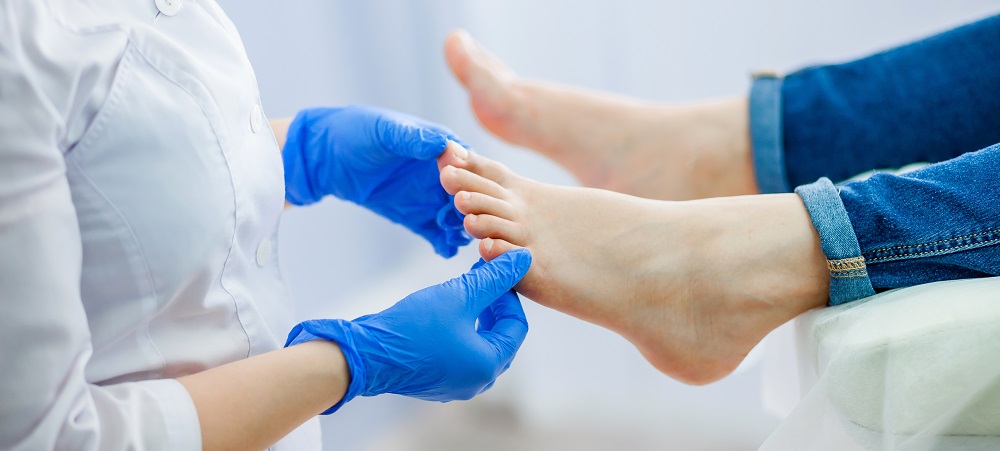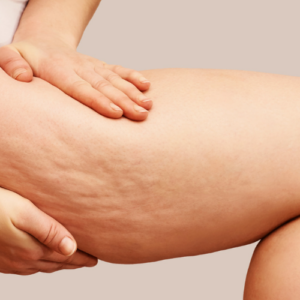
Nail fungus is a common condition for a lot of people. It is characterized by a white or yellow spot under the tip of your fingernail or toenail. In time, this fungal infection goes deeper and can affect other nails as well. It can later cause discoloration on your nails, and thicken it, making your nails crumble on the edges. That is why you need to treat nail fungus at the first signs of it.
Depending on the degree of your nail fungal infection, you may not need treatment if it’s a mild case. But if your fungal infection is now painful and has caused thickened nails, it is best to contact your local clinic at once. Topical treatments and home remedies sometimes do the job, but nail fungus often comes back.
Nail fungus is also called onychomycosis (on-ih-koh-my-KOH-sis). In this article, we will learn how to treat nail fungus effectively.
What Causes Nail Fungus?

Nail fungal infections are caused by microscopic organisms called fungi. These fungi do not require sunlight to survive, which means that it can thrive anywhere.
Dermatophytes (such as Candida) are the most common group of fungi. These are the ones responsible for nail fungal infections. But there are some yeasts and moulds that can also cause these infections. These include:
- Trichophyton rubrum – the most common dermatophyte that causes nail fungal infections.
- Trichophyton interdigitale.
- Epidermophyton floccosum.
- Trichophyton violaceum.
- Microsporum gypseum.
- Trichophyton tonsurans.
- Trichophyton soudanense.
Common mould causes include:
- Neoscytalidium
- Scopulariopsis
- Aspergillus
If you have tiny cuts or small separations between the nail and nail bed, pathogens can enter the skin through those and later cause a nail fungal infection. Because the nail provides a suitably warm and moist environment, it is a perfect place for the fungi to grow.
Symptoms of Nail Fungus
If you have these signs in one or more of your nails, then that might be a sign of nail fungal infection. These include:
- Thickened nails
- Whitish to yellow-brown discolouration
- Brittle, crumbly or ragged edges
- Distorted in shape nails
- A dark colour, caused by debris building up under your nail
- Foul smell
Nail fungus can affect even your fingernails, but toenails are more commonly affected with nail fungi. And since we don’t necessarily look after our toenails that often, then there is a higher risk of having nail fungal infection. That is why you need to treat nail fungus at once!

Related article: Laser Nail Fungus Treatment
How to Prevent Nail Fungus
The following habits can help prevent nail fungus. It can also avoid the propagation of athlete’s foot, which can lead to nail fungus later on:
- Wash your hands and feet regularly. Wash your hands after touching an infected nail.
- Moisturize your nails after washing.
- Trim nails straight across, smooth the edges with a file and file down thickened areas.
- Disinfect your nail clippers after each use.
- Wear sweat-absorbing socks or change your socks throughout the day.
- Choose shoes made of materials that breathe.
- Discard old shoes or treat them with disinfectants or antifungal powders.
- Wear footwear in pool areas and locker rooms.
- Choose a nail salon that uses sterilized manicure tools for each customer.
- Give up nail polish and artificial nails.
Risk Factors of Getting a Nail Fungal Infection
Everyone poses the risk of having a nail fungal infection. But studies have shown that men and the elderly are more prone to getting nail fungus. While nail fungus is somewhat of physical nature, there are a lot of risks that come with it. That is why you must treat nail fungus at the first sign of infection. Risks involved include:
- Diminished blood circulation
- Slow-growing nails
- A family history of fungal infection
- Heavy perspiration
- A humid work environment
- Wearing artificial nails
- Wearing socks and shoes that prevent ventilation
- Walking barefoot in damp public places, such as swimming pools, gyms, and shower rooms
- Previous injury or infection to the skin or nail
- Diabetes, AIDS, circulation problems, a weakened immune system
- Tight footwear with crowding of toes
- Exercises that cause repeated minor trauma to the hyponychium, where the fingertip attaches to the nail
Since slower growing nails and lower blood circulation are part of the natural ageing process, older adults have a higher risk of getting nail fungus.
How to Treat Nail Fungus

Treating nail fungus is none but easy. But it depends on the type, symptoms and pre-existing conditions, and the extent and severity of nail involvement. Hence getting medical advice from your local doctor or dermal aesthetician is a must.
Now the goal when you treat nail fungus is to eradicate the pathogen that causes the infection. Nail fungus has the possibility to return after treatment and may cause permanent damage if not well taken care of. As nail fungus has a high relapse rate of 40–70%, you must take preventative and appropriate self-care strategies to avoid re-infection.
Topical Treatments
There are some topical treatments for nail fungal infection in the market. But since the nail’s anatomy has a compact and hard nature, penetration of topical drugs may be poor. Though some topical treatments with higher concentration might work, if not properly used, it could lead to relapse.
Systemic Therapy
If you have a confirmed nail fungal infection, and self-care strategies are not working, you can opt for a systematic therapy. Since some topical therapy is unsuccessful or inappropriate, oral medication can be prescribed to battle the fungal infection. But we know that not all are keen on taking medication, and would rather deal with it in a less invasive and external way.
Laser Treatment for Toenail Fungus
When one thinks of laser treatments, one might think of some of the more common applications of the laser, such as removing age spots and minimizing the appearance of fine lines and wrinkles. However, lasers have also been an effective way to treat nail fungus. By using a laser to treat nail fungus, we apply it to help destroy the fungus on and around the nails and toes. The nail fungus laser only targets the harmful bacteria, not the healthy tissue around the nails and toes.
Benefits of laser treatment include:
- Quick and pain-free treatment
- Minimal treatments required for optimal results
- Permanent results
- Relief of pain and embarrassment caused by nail fungus

In Conclusion
Many factors come into play when you treat nail fungi, such as nail penetrability, infection severity, and overall health. Home remedies and topical remedies may take longer to show results. Also, there is a threat of reinfection if the nail fungus is not well-taken care of.
If you want to treat nail fungus effectively, then choose laser treatment! Canada MedLaser Clinics in Mississauga are all well equipped and together, with our expert beauty technicians, we are ready to tackle concerns like nail fungus.
Contact us today to learn more about this laser treatment. Book a free consultation now.
Book Free Consultation
"*" indicates required fields
-
Facebook
-
Twitter
-
Linkedin





